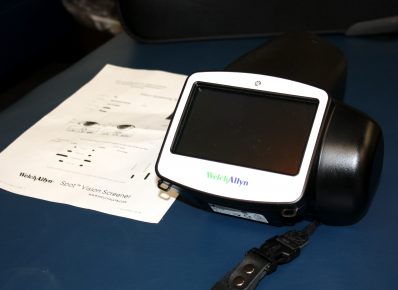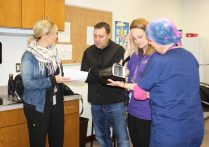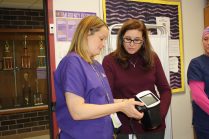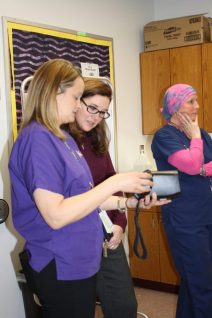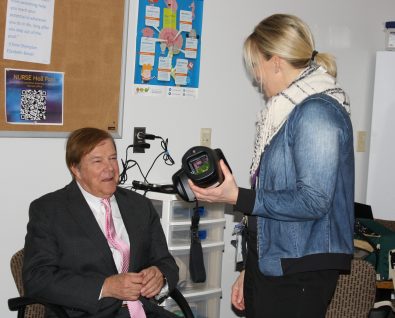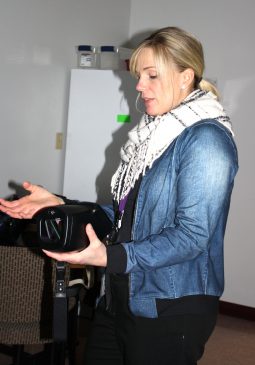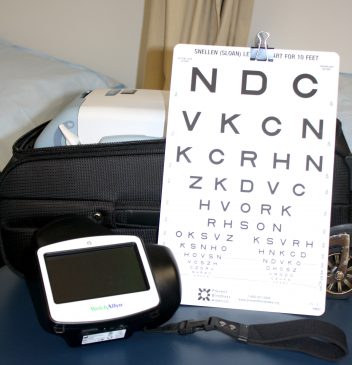JCSD Health Department Receives Donation of a SPOT Vision Screener
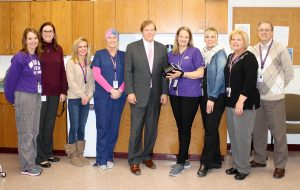
A request for a SPOT Vision Screener was requested by the JCSD nurses through the Johnston Community School Foundation grant application process. Over the course of the last year, JCSF board members worked collaboratively with donors to bring this request to fruition.
“I wrote the request because I believe if there is new technology available to help accurately identify student’s vision issues, and saves nurse’s time during the school day, we should try to obtain that technology. Being able to screen hundreds of students in a tenth of the time it normally takes would give the JCSD nurses more time to care for our students and perform other important job duties,” explains Whitney Overton, Johnston Middle School Nurse.
The SPOT Vision Screener was presented to JCSD nurses in mid-February. Kristin Wendl, Lawson Elementary School nurse demonstrated how the screen reader works. Kristin explained, “The SPOT vision screener is a form of vision screening that only requires a child to look at the camera for a few brief seconds. Photo screening allows us to objectively screen students that we had not been able to screen in the past. Traditional wall charts are more of a subjective type of screening which requires the student to verbalize their shapes or letters and be able to cover their eye while reading the chart. With the SPOT screener, we confidently screen our preschool children, students with developmental delays, and nonverbal students as well as our ESL students.”
It is required by the Iowa Department of Education, that all Kindergartners and third grade students have vision screenings completed by the school nurse. For JCSD this is any where from 200-300 students for each building nurse to screen. The screen reader take less time and is more accurate at indicating if the student has a vision concern. This means less time out of the classroom for students and vision issues found sooner all impacting the students educational experience.
